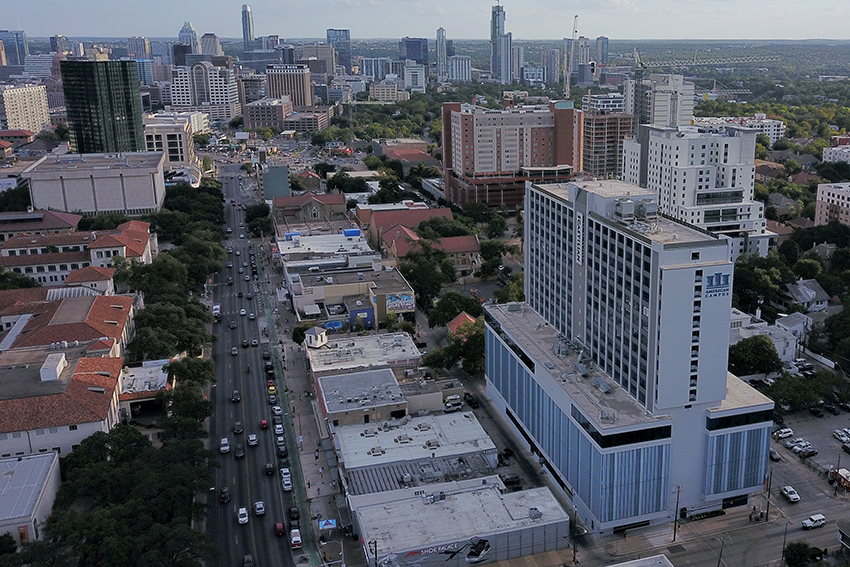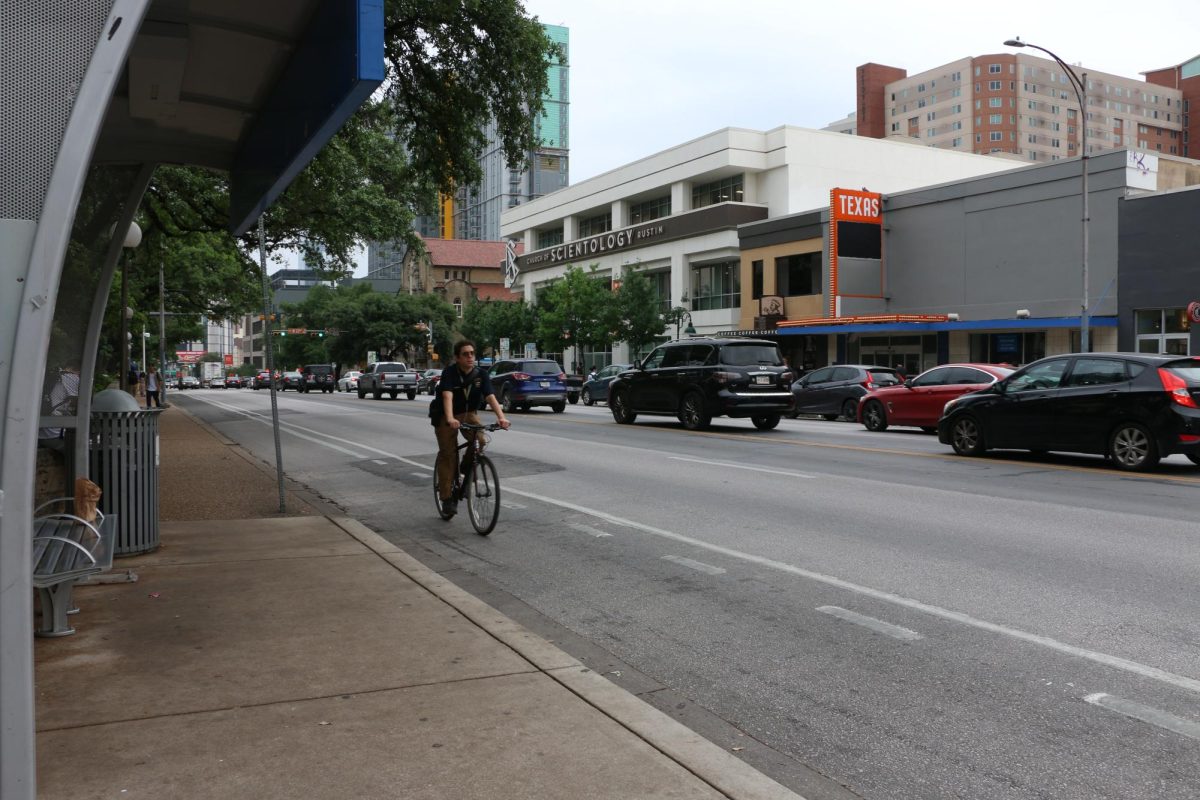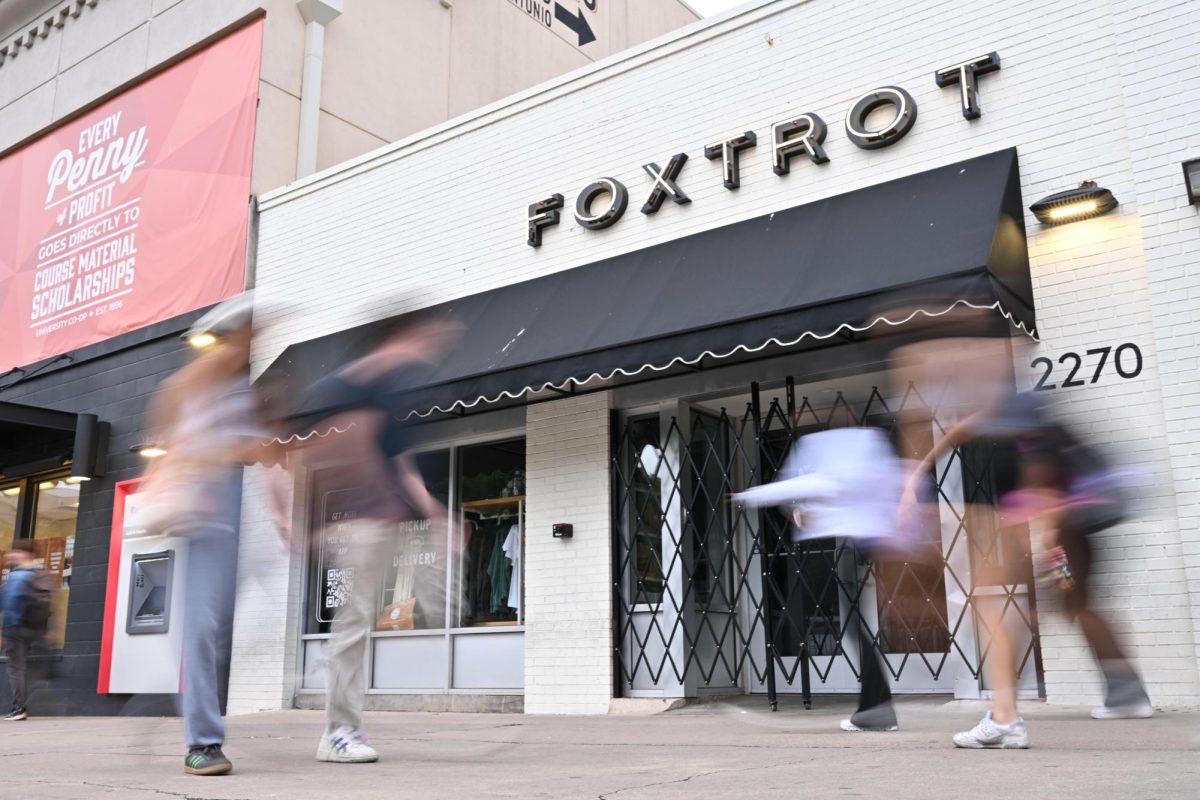West Campus today is not the West Campus it has always been. Fifteen years ago, ambitious high-rises were almost nonexistent. Features such as bike lanes and street lighting were yet to be improved, or even added.
Architecture professor Jake Wegemann stayed in West Campus in 1996, and when he returned nearly 20 years later, he said he was surprised by what he found.
“When I came back to Austin in 2014, I was just mind boggled at the change,” Wegemann said. “There are just more people and more businesses and more activity, which I think is fantastic. I love the energy.”
After almost 10 years of efforts by UT, Capital Metro and University Area Partners, a West Campus neighborhood association, plans were made in 2004 for University Neighborhood Overlay. UNO was the program that would kickstart more than a decade of development in one of Austin’s most populated neighborhoods.
Mike McHone, a real estate broker and founding member of University Area Partners, said UNO is an incentive-based redevelopment plan.
Developers opt in to play by UNO’s rules, which include providing a specific small percentage of affordable housing in exchange for permission to “build up,” McHone said.
Developers have taken advantage ofthose conditions, McHone said. Under UNO, a total of 52 projects have been built since 2005, corresponding to 5,058 units and 12,202 bedrooms. Of those, only 593 units are considered affordable or priced lower than the city standard.
City officials and residents originally clamored to block high-rise development, worrying the original character of West Campus would become unrecognizable, McHone said.
“We came within a whiskers breath of not making it,” McHone said. “But I don’t do this to win friends. I do it because I believe in it. Ten thousand people living in rundown apartments are not a good idea. Apartments now are luxurious beyond belief, and they wouldn’t have existed if not for UNO. You either embrace change and figure out what you like about it or you fight it, and that’s a losing battle.”
McHone said he fears the city is taking steps that will hinder UNO. McHone said the Austin City Council is reviewing density bonus programs that control housing downtown and may bump up the building fee as a penalty for having zero affordable housing units.
If that happens and the city council also decides to review UNO development, McHone said UNO could be forced to increase fees as well. He said building in West Campus could radically slow down, meaning higher prices for students.
“Every year there’s another 500 bedrooms that come on the marketplace, and they can charge the higher rates but (other housing projects are) … 10, 15 years older now,” McHone said. “How do you get affordable housing? Build more.”
Plan II and business sophomore Karla Aguilar lives in West Campus, and said she hopes West Campus construction will slow down.
“Sometimes the constant construction and growth is overwhelming,” Aguilar said. “How many people can really fit in West Campus?”
Don Wukasch, a retired physician whose family has inhabited West Campus for generations, has lived through the transformation. His father was born on the corner of the Drag in the early 1900s. Wukasch himself was born a few blocks north and lived in West Campus during his time as a UT student. Wukasch said his family still owns several developments on Guadalupe Street and in West Campus and views the development positively.
“The city changes, West Campus changes, everything changes,” Wukasch said. “You have to go with the times and make a contribution to make it better.”





















